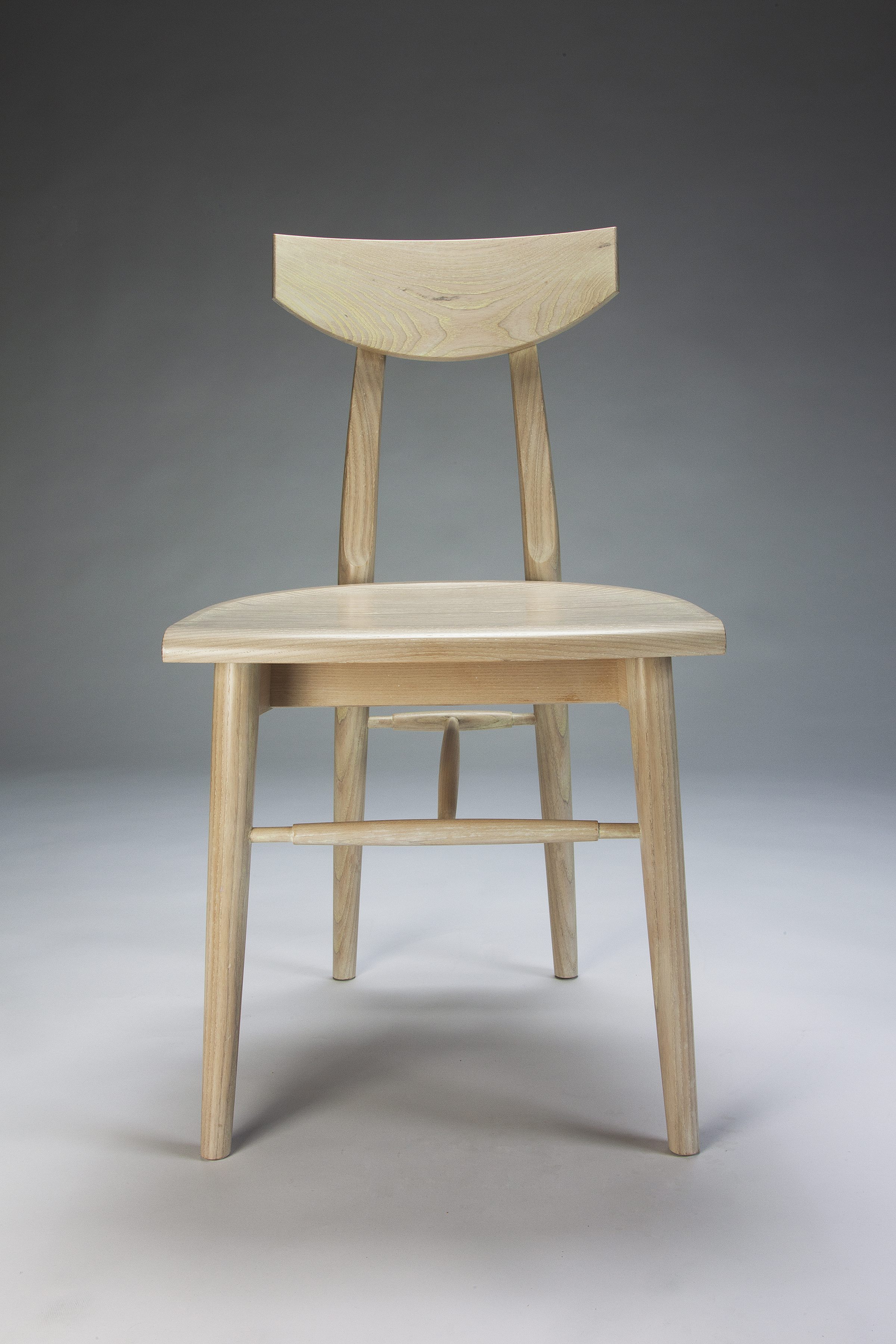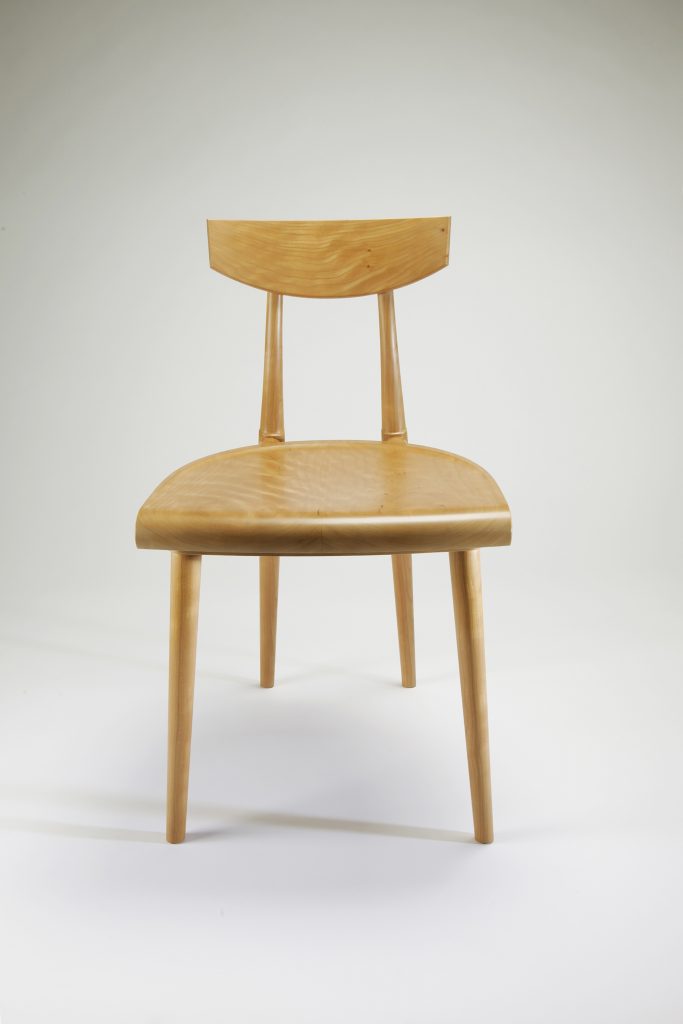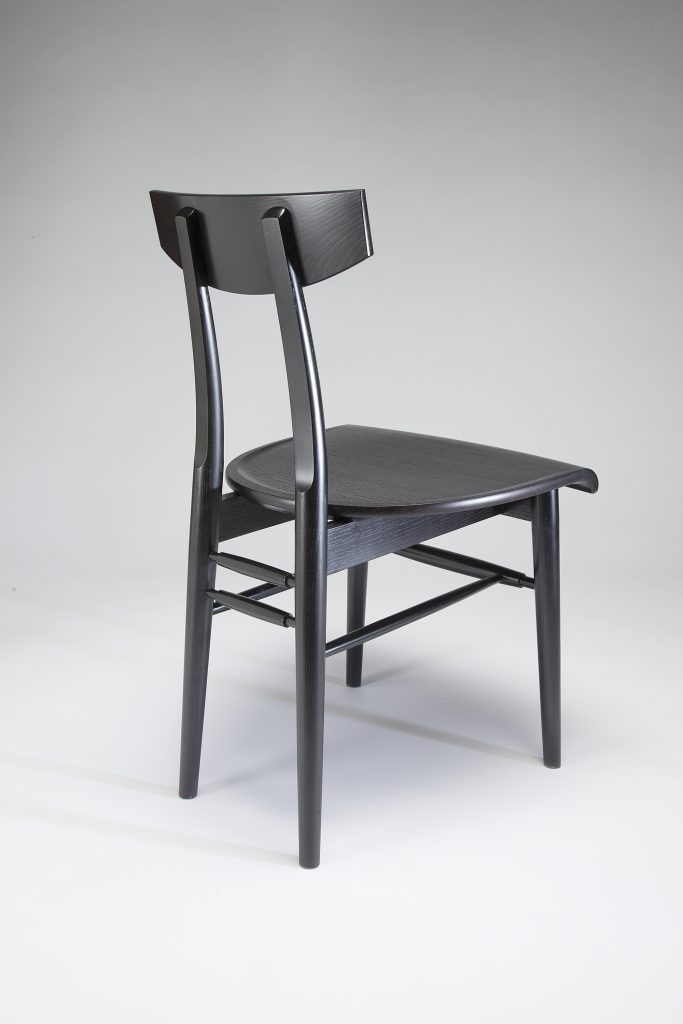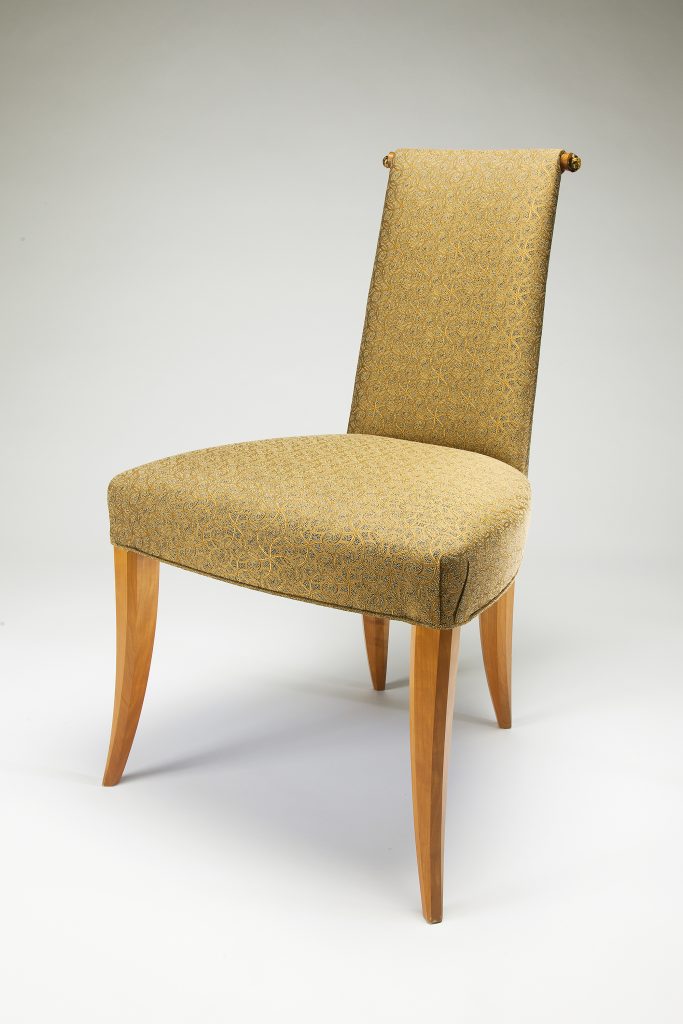
Josh Lyford
John Dunnigan is a studio furniture maker and artist. No, those aren’t disparate pursuits, they are two views of the same object from different perspectives. Dunnigan, much like his work, represents parallel layers operating in harmony. Chairs? Yes, but the title of the exhibition at Anna Maria College gives more than a hint of what to expect and functions as an anchor phrase for the artist himself: Practical Solutions to Oblique Problems.
“In general terms, some examples of oblique problems might be, what happens in a chair?” Dunnigan said from his Kingston, RI home. “How do chairs express identity, status, and culture? Getting down into an aspect of seating and chairs: what is comfort? When you actually begin to think about it seriously, people make quick assumptions about comfort. ‘I’m not comfortable, that’s not comfortable,’ etc. Arguably comfort is about 50 percent physical and 50 percent psychological. It can shift from person to person or even for one person throughout the day. It has meant different things to different cultures. It doesn’t have a simple answer.”
“It describes the show, yes. It’s a term I’ve used for my own work exclusively,” he continued. “I started looking at my work through that lens maybe a decade ago — maybe even longer than that — as a way to describe what I was doing. It seemed like a good opportunity to put this show under that umbrella.”
The exhibition is a sort of soft retrospective. The 14 pieces selected represent 40 years of Dunnigan’s career, but it isn’t comprehensive. It’s just “a slice.” It’s a sample of a lifetime of hand-to-material crafting, selected by the artist himself.

Dunnigan, who in addition to his own work helps students advance their craft as a professor at the Rhode Island School of Design, has more than a few thoughts on the subject.
“I’m much more interested in the questions, not the answers,” Dunnigan explained. “We can see pretty easily that the oldest examples of chairs available to us, which are in the range of 5,000 years old, with the Egyptian stuff that goes back to the old kingdom. We can see that they have this kind of purpose related to being signifiers of social status. Some of the oldest things that we have are also some of the most elaborate that we have. It pretty clearly demonstrates that they are loaded with meaning for people.”

Having a seat at all was a sign of authority, explained Dunnigan. These days, they are produced in such a way that “there are estimates that enough chairs are produced in the world for each person on the planet to have eight chairs.”
It is clear that Dunnigan has an immense passion for the furniture he creates, but what is on display at the exhibition are pieces of art, to be sure, but they are chairs.
And chairs are meant to be used.
“Knowing that they’re going to be used is the point,” explained Dunnigan. “I think we use paintings by looking at them. In terms of chairs, you’re going to sit on it. The things in your life are going to unfold around you and that chair is a prop in those experiences of your life. If it’s painful to sit in, or it’s not durable, you’re probably not going to have it long enough to let those experiences build.”

As a mini-retrospective, then, there must be a few pieces worn from use and time on display.
“I think that one or two of the older chairs that I put in this exhibit have little dog teeth marks, little dents,” he said. “ They are supposed to be used and to me, that’s the best feeling when you know that you’ve engaged with that aspect of life in your work. The work is never quite done, they just come and take it away.”
Practical Solutions to Oblique Problems will be on display at the Art Center Gallery at Anna Maria College through December.





